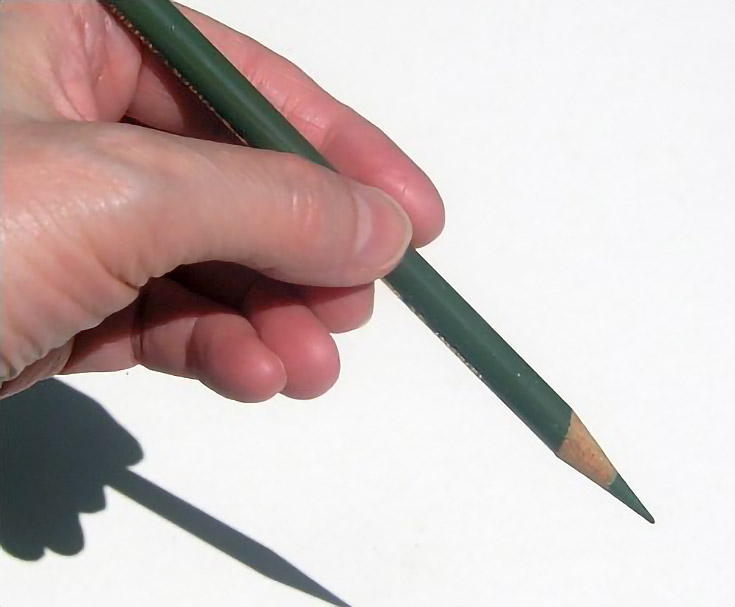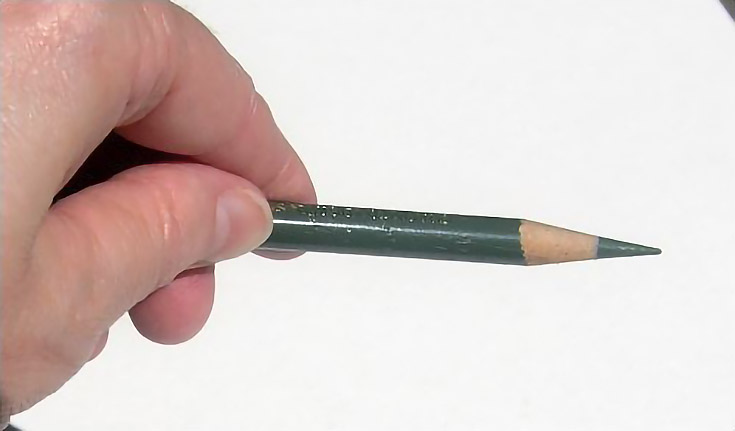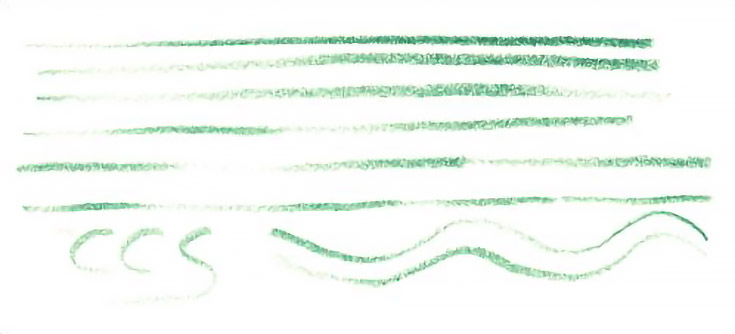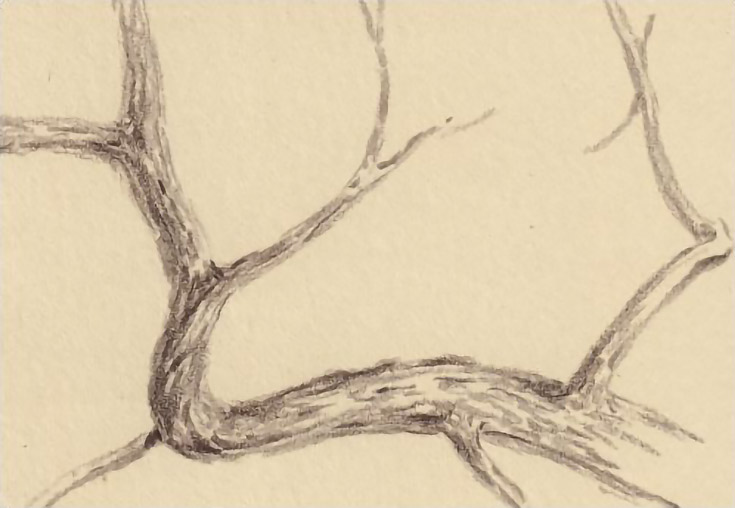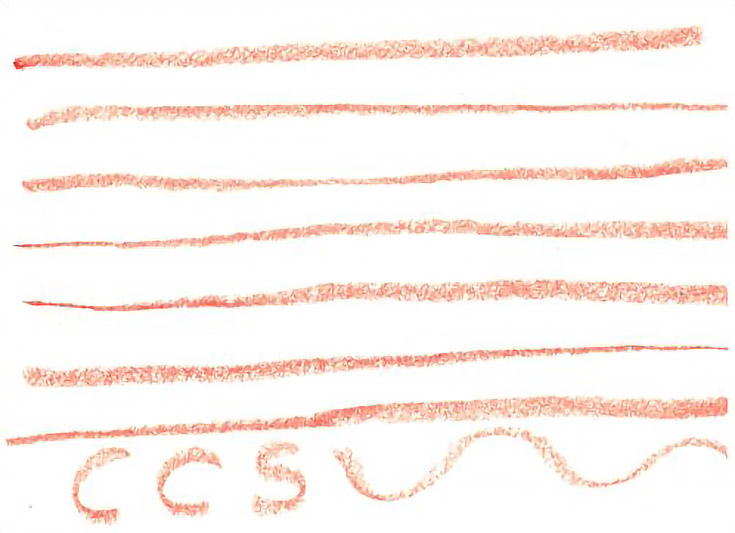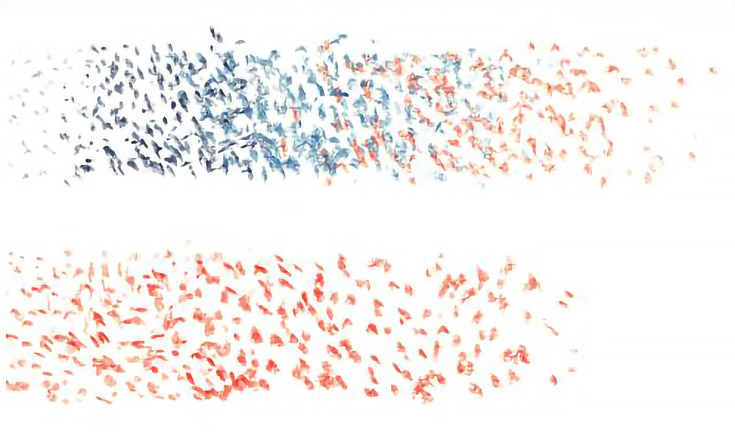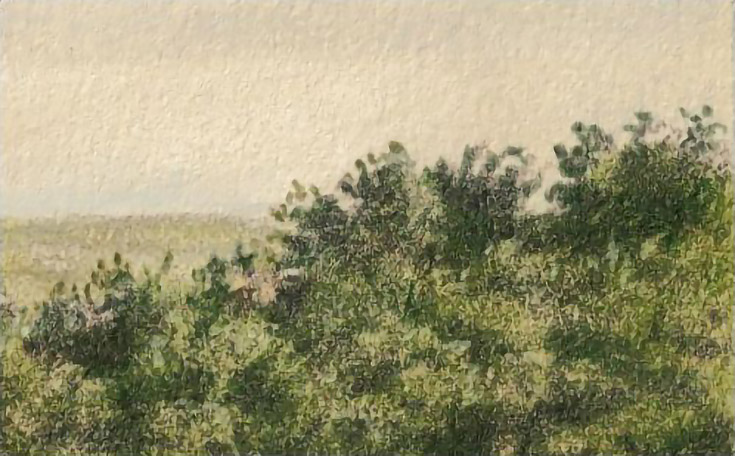When your medium is capable of making only a limited number of stroke types, and you make art by layering marks, you need to get everything you can out of every mark you make.
Every mark should help you create the texture or value (or both) of your subject. That begins with the first mark you put on paper and doesn’t end until you make the last mark. So I’m not talking about regular strokes with this article. I’ve covered those before in a post titled 5 Basic Colored Pencil Strokes.
Today, we’re going deeper. It’s important to not only master the basics, but experiment with new methods. I’ve been doing more experimenting of late, and would like to share a few advanced suggestions for making every pencil stroke carry its own weight:
1. Pay attention to your grip
Unless you have a physical reason that alters the way you hold the pencil, it’s likely you hold it the same way you hold a writing tool: close to the bottom, and in an upright position.
There’s no doubt about it, that is a good way to hold a drawing pencil. But it’s not the only way.
One option is to hold the pencil further up the barrel. That grip actually provides for better control over the amount of pressure you use, as well as over the movement of the pencil (once you get used to it). It also allows you to adjust the angle of the pencil on the paper while you draw. You will want to practice first before trying it with a drawing, though.
Or, try holding the pencil with the tips of all your fingers, instead of just your index finger and thumb. The pencil will rest on or near your palm when you hold it this way.
Changing the way you hold the pencil will relieve fatique if your hand gets tired but you don’t want to (or can’t) take a break. This grip also allows you to hold the pencil in a more horizontal position while drawing.
Why would you want to do that? Read on!
2. Use the side of your pencil lead
Use the side of a well-sharpened pencil to draw wide lines or broad areas of color. This stroking method is perfect for laying down glazes (color applied with very light pressure to tint an area.)
If you happen to have woodless pencils, you have even more versatility in this regard, because you can draw with the entire length of the pencil that you’re holding. For a little more variation, apply color in long sweeping motions over large areas, or in circular motions.
3. Use pressure to vary the darkness of your strokes
To vary the darkness of your lines, change the amount of pressure as you draw. This will take some practice, but learning to vary the amount of pressure you apply while you’re making marks saves time in the drawing process. You won’t have to use quite so many layers to draw even subtle shifts in value.
4. Adapt your pressure to your subject matter
Before putting pencil to paper, take a good, long look at what you’re drawing. Think about the texture of the subject, and about how you can duplicate that texture with the marks you make.
For example, draw short grass with short, vertical strokes that began at the bottom and move upward. For taller grass, use longer strokes. Combine still longer strokes with changes in pressure to draw very tall grass. Or long hair.
Everything has a surface texture, and you can mimic a lot of those textures by carefully selecting the strokes you use to draw it. Learn to see the “marks” in each type of texture, then use pencil strokes to duplicate it and you’ll save yourself a lot of drawing time.
5. Use a blunt pencil and twist it for line variation
Most artists who have been using colored pencils for any length of time have heard how important it is to keep their pencils sharp.But there is also value in a blunted or edged pencil.
Blunted pencils are great for drawing even color in small areas, especially if you use a circular stroke. But you can also turn the pencil slowly as you draw and use the blunted tip to draw marks that vary in width and darkness.
Sharpen your pencil to a wedge shape for even more interesting results. I drew the illustration above with a pencil filed into a wedge shape. The wedge shape dulls quickly, so keep an emery board or fingernail file handy.
6. Use stippling for broken color and accents
When you stipple, you tap the paper with the tip of the pencil. The result is a pointillist technique that’s perfect for adding accent details, creating broken color or drawing interesting textures.
You can even blend colors with stippling:
The bottom section above shows what you can do by mixing sharp and blunt pencils for stippling. I stipple details around the edges of trees and mix light, medium and dark colors to add even more interest.
Here, I stippled details around the outer edges of these trees:
There’s no question you can create stunning colored pencil art pieces by using the basic strokes and nothing else. But it can be fun and productive to try different ways to make marks, too, and you won’t know what works for you until you try.
So get out those pencils and paper and see what you can do!
This post may contain affiliate links.
